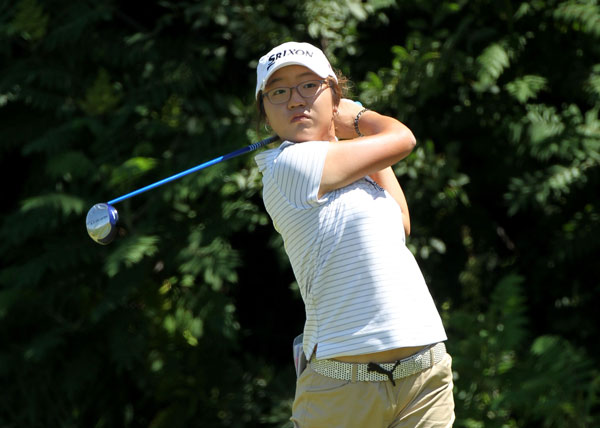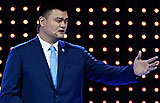The rise of Asia's 'Tiger women'
(Agencies) Updated: 2012-09-01 09:22
 |
|
Lydia Ko of New Zealand hits her tee shot on the 14th hole during the final round of the US Women's Open at Blackwolf Run on July 8 in Wisconsin. [Photo/Agencies] |
Untold hours of training and unstinting parental support put teenager Lydia Ko on top of female golf - a formula followed time and again by Asia's world-beating women.
When New Zealand amateur Ko, who was born in South Korea, became the youngest US LPGA winner aged 15 last week, it was the result of years of dawn-to-dusk practising and a love of golf which started when she was five.
Such dedication, which bore fruit with her remarkable three-stroke win at the prestigious Canadian Women's Open, earned her a place among the Asia-Pacific players who now dominate the world rankings.
Seven of the women's top 10, including Taiwan's world No 1 Tseng Yani, come from Asia. Among the current top 50, 33 players are from the Asia-Pacific region, mainly South Korea or Japan.
On Sunday, Ko became the 13th Asia-Pacific winner on this year's LPGA schedule, out of only 19 events played so far. The win propelled her 140 places up the rankings to 45, and drew comparisons with Tiger Woods.
As if to make a point, unflappable Ko played the final round in red, the Woods trademark. And just like the 14-time major-winner, she built on her overnight lead to win with room to spare.
"My mom asked me this morning what do you want to wear, and I said, black pants. And she said, red top? And I was like, OK," shrugged Ko on Sunday.
"She said, 'Oh, you're going to look like Tiger Woods, because you know, he seems to do that as well'. And red is a good color, because yesterday I wore a grey the top, and my aunt called and said, 'You look too dark'.
"So I guess this is bright enough, right?"
Ko's interest in golf started at five, when she was given a putter and a seven-iron by an aunt. Four years later, aged just nine, she played the New Zealand amateur championship, and she won her first national title aged 11.
At 12, Ko finished tied for seventh at the New Zealand Women's Open, five shots behind winner Laura Davies. Last year, she missed victory at the NSW Open by a single stroke and became the youngest ever world No 1 amateur.
And in January, Ko succeeded Japan's Ryo Ishikawa as the youngest winner, male or female, of a professional event at the Women's NSW Open in Sydney. But her success has been earned the hard way.
Earlier this year, Ko said she trained up to 50 hours a week in the school holidays, from sunrise to sunset, cutting down to 30-40 hours in term-time as she builds towards a professional career and the 2016 Olympics.
While the relaxed, bespectacled teenager stressed her parents never pushed her towards a golf career, their backing has been vital as she juggles the sport's rigors with her studies.
According to Rae-Vadee Suwan, chairwoman of the Ladies Asian Golf Tour (LAGT), staunch parental support is a common thread that runs through the success of Asia's women players.
"You have to have parents who are quite determined for their daughters to do well. It's very important - the parents have to pay attention and push them along," she said.
"Sometimes they don't really know what they want, but if the parents see the potential of the kids it's good to promote them and try to get them to the level where they will be good."
Ko is following in the footsteps of Tseng, Karrie Webb and Pak Se-ri, who came up through Asia's amateur ranks and also played the Queen Sirikit Cup, an annual team tournament. Ko's New Zealand finished second at this year's event.
Asian women can now graduate from amateur golf to the LAGT, and then on to the Japanese or South Korean tours, or the LPGA or Futures circuits in the United States, said Rae.
She said the boom in Asian women's golf followed Pak's breakthrough season in 1998, when she won the LPGA Championship and the US Women's Open and inspired a generation of players.
"They all look up to her as a role model that they want to follow. Korean golfers have achieved a lot since then - most of their national team players turned professional eventually, that's why they're all doing well," she said.
"Also now they see the potential of being a good golfer and they think a professional career could be a good occupation for them. Now it's a career path for all women to look forward to."
Rae said the LAGT has grown so rapidly it's had to introduce quotas limiting the numbers of players per country, and has 13 events this year compared to just one in 2005.
She said it was important for players to build their careers "step by step" - unlike another Korean-origin prodigy, Michelle Wie, who stalled after turning pro just before her 16th birthday.
"I think Lydia Ko, of course, has great potential because she's still young and she's still keen to stay amateur, and I think it's good not to rush into professional events when you're still young," said Rae.
"You remember Michelle Wie? She turned pro too soon, she wasn't ready for it mentally, that's why she didn't do well. You have to be ready, and not only physically or in terms of skill, but mentally as well."








